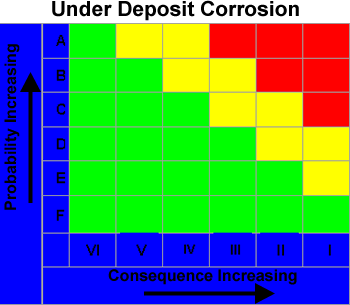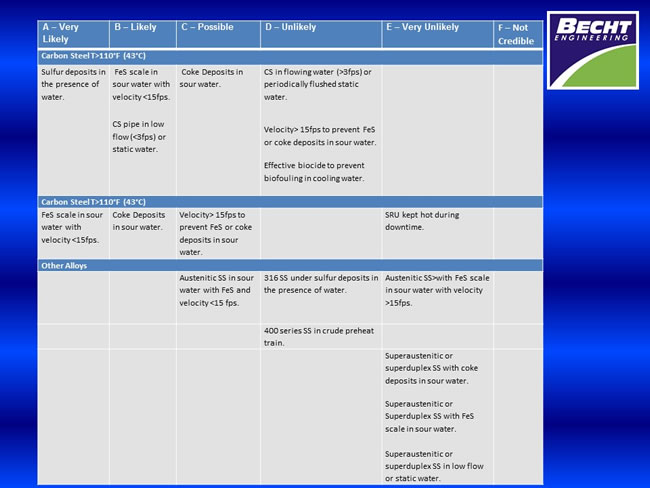BIDES – A Knowledge Base Facilitating Effective RBI Assessments
There are numerous challenges that Inspectors and Reliability Engineers face when developing Risk Based Asset Integrity Plans, such as:
-
- Identifying the applicable Damage Mechanisms
- Picking the correct Failure Mode(s)
- Determining the Probability of Failure
- Deciding how to mitigate risks to acceptable levels
Industry documents give some guidance (i.e. API-571, API-580) but not the whole picture. A new suite of Becht Documents clarifies where the industry documents leave off; giving the user a repeatable solution to these challenges. We call these documents BIDES – Becht Inspection Development and Execution Strategies.
What is BIDES?
BIDES is a suite of 76 documents that lay the technical foundation for Damage Mechanism Reviews, Integrity Operating Windows (IOW), Turnaround Risk Based Work Selection (RBWS), and Equipment Reliability Plans (ERP). Each element of the BIDES covers a specific damage mechanism. The suite includes the 66 damage mechanisms listed in API-571 (including 10 common damage mechanisms found in the refining industry).
BIDES plugs crucial gaps in industry documents by providing guidance to the user. Guidance on how to identify the applicable damage mechanisms and methodology for Semi-Quantitative Probability of Failure Assessments. Each section of BIDES is dedicated to identifying units and specific equipment that are the most likely locations affected by each damage mechanism.
Critical Factors
The Critical Factors (Operating Conditions, Metallurgy, Concentrations, Velocities, etc.) that affect the rate and severity of damage are delineated in BIDES. These Critical Factors are combined in Probability of Failure (POF) tables to determine a likelihood of failure for a specific damage mechanism. The POF tables provide the first Semi-Quantitative methodology for Probability Assessments that are available commercially in industry. They are an alternative to the API-581 approach which can be used to validate Quantitative RBI results. Moreover the POF Tables are applicable to equipment with no inspection history — such as new equipment. The example table shown here is for “Under Deposit Corrosion”, a common industry Damage Mechanism.
Note: “Under Deposit Corrosion” is not included in API-571.


Conclusion
BIDES prescribes structured and repeatable methods for Risk reductions resulting from both mitigation actions and inspection actions for Piping. Examples of mitigation actions are metallurgical upgrades or the addition of corrosion inhibition. Inspection actions include the NDE techniques to use, and the percentage of inspection coverage required for different levels of Probability Reduction. Result – inspection plans may be tailored to the amount of Risk Reduction required.
Although there is no substitute for experience and expertise, BIDES has distilled the knowledge that Inspectors and Engineers may utilize to develop review plans for validation by a cross-functional team — saving an organization time and money. Each element of BIDES was developed by a Materials Subject Matter Expert (SME) with more than 30 years of experience in the Refining industry. Input to BIDES was provided by experienced Inspection and Reliability SMEs to make these knowledge-based factors practical and understandable documents.
For more information on what the Becht Engineering Reliability Group can do for you, please CLICK HERE or feel free to contact us by clicking the link below.




